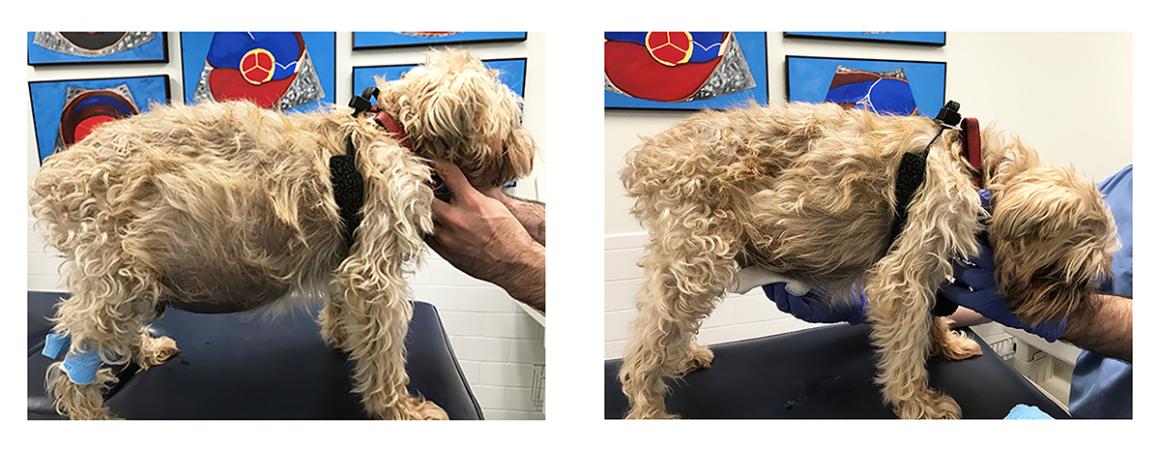Other Treatments for Heart Disease
Fluid Removal (thoracocentesis, abdominocentesis, pericardiocentesis)
Some dogs and cats with congestive heart failure accumulate free fluid in their chest or abdomen. Occasionally this fluid will go away with medications, but often the fastest way to make an animal feel better is to drain the fluid with a needle. This is a minimally invasive procedure that can be performed with mild sedation or sometimes just with numbing of the skin.
Once the extra fluid has been removed, medications will be required to keep the fluid from coming back. Some pets have recurrent fluid despite medications and need regular veterinary visits to periodically drain the fluid.
Pericardial disease can also result in fluid build-up, and a large amount of fluid around the heart can cause weakness or collapse. This fluid can be removed with a needle, and the procedure is often guided by ultrasound.
Pacemakers
Dogs with certain very slow heart rhythms require pacemaker implantation. This is a procedure done under general anesthesia, and regular recheck visits are required after recovery. Having a pacemaker can prevent episodes of collapse and sudden death by keeping the heart beating regularly. After getting a pacemaker, pets often feel much more energetic than they have in a long time!
Cardiac Catheterization
Some heart diseases, especially those seen in puppies and kittens (congenital heart disease), can be improved or repaired with minimally invasive catheter-based procedures. Sometimes this involves widening a valve, and other times this involves closing a hole that should not be present.
Arrhythmia Mapping and Ablation
Some arrhythmias can be permanently cured with a catheter procedure. This may reduce the number of medications required. This is a specialized procedure that is only done at certain veterinary hospitals.
Open Chest Surgery (Thoracotomy)
Some pericardial diseases or congenital heart diseases can be improved or repaired by opening the chest to do surgery. This can involve removing the pericardium, removing or reducing the size of heart tumors, or closing abnormal connections such as a patent ductus arteriosus. Thoracotomies are invasive procedures that require general anesthesia and should be performed by an experienced veterinary surgeon. While it may take a person weeks to recover from a thoracotomy, pets often feel fine in 1-2 days, especially when good pain control strategies are utilized.
Open Heart Surgery
There are not as many options for surgical repair of heart problems in pets as there are in people. However, some hospitals have specialized in doing open-heart surgery on dogs, and certain diseases such as degenerative mitral valve disease or valves that are abnormal at birth can sometimes be repaired. These surgical procedures are typically very expensive, but they can be life-saving.
